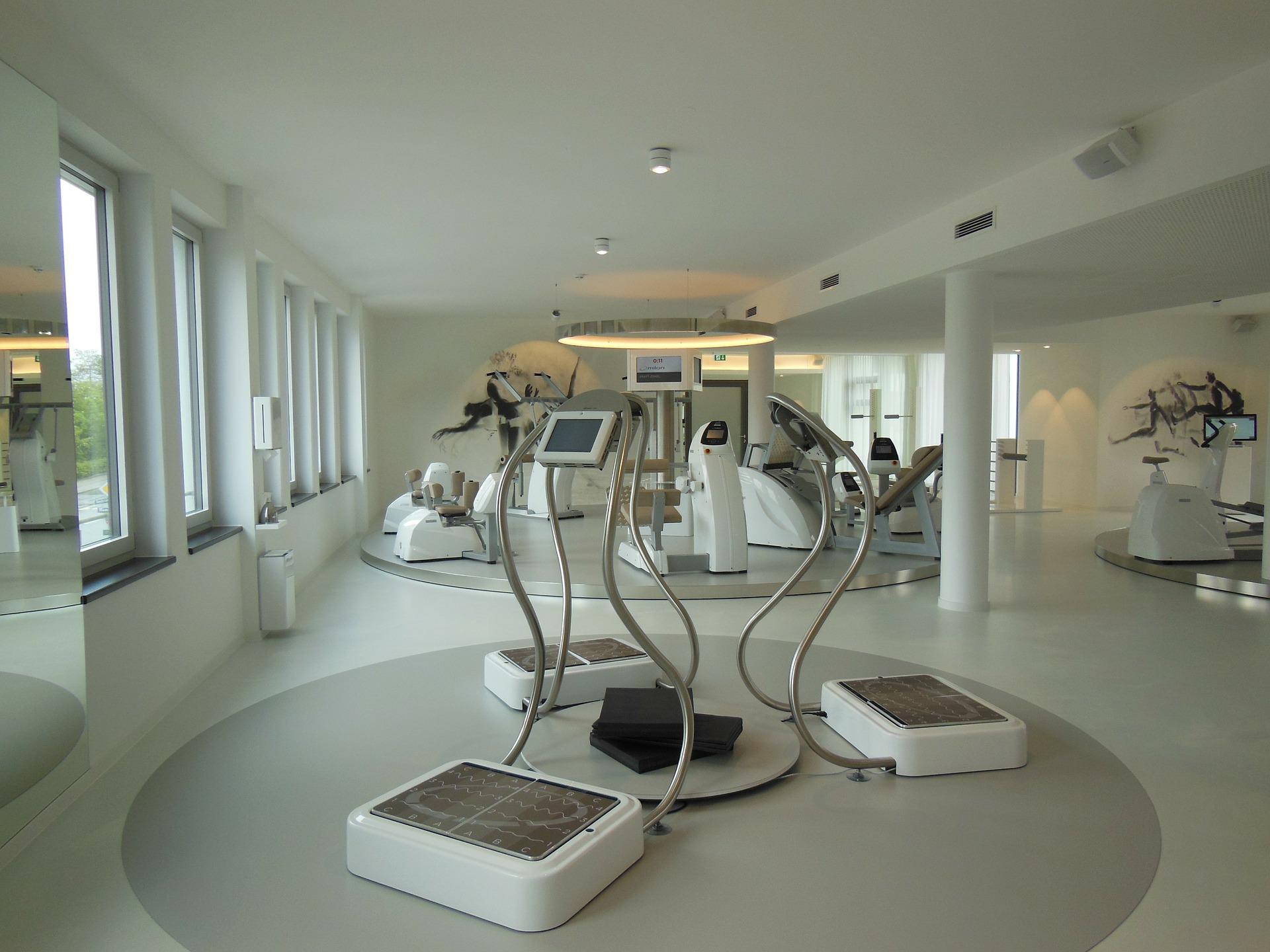Sports medicine is a rapidly growing discipline in modern healthcare. Doctors in this field train professional athletes and athletes of all skill levels at the amateur level. A sports doctor provides assessment tests, first aid and rehabilitation to athletes. They help them prepare before, during and after training, camps and competitions to make sure they stay safe, provides nutrient intake according to the stages of training.
Sports medicine offices work in modern fitness clubs because it’s a great way to get qualified trainers and actual doctors working together. With them, you’ll be sure that you’re getting the most effective training- both in terms of the results, and the safety.
The fitness industry has come a long way since rockers were popular. Coaches are now an integral part of the industry, and as such you’ll find them in chairs or on bikes. This personal approach ensures every client is given their own tailored advice for success whether its weight loss, training or improving their mobility.
Modern fitness is primarily an individual process since the best results are obtained when a personal training program is based on individual characteristics, capabilities, and health.
One of the benefits of having a personal doctor is that they can review your medical data at any time, whether it be online or in person.
The Institute of Personal Doctors work in a novel way, the idea being that one doctor is assigned to each patient and follows their treatment from start to finish. This means you’ll always have easy access to the information you need, no matter where you are, Managing a patient with ALS can be complicated, but we are here for you. Our coordinators help everyone involved in the process. With a doctor, patients can be in contact for decades and the exams will also last quite a while. All this is possible without coming every month or undergoing serious examinations. Being in good health is very important for the quality of our lives. Being proactive about the prevention of diseases can have a huge impact on your well-being. The doctor is there to consult you whether it be a chronic disease or wellness tips–they work with you on a holistic approach to well-being, bringing awareness of risks before they happen.
The majority of personal doctors either assess or treat diagnosed.
Doctors with a personal background will generally be family doctors. With extra special training in fields like therapy, internal medicine, gynecology, and urology. They can also specialize in pediatrics and dermatology. Doctors work on a personal level to find the best solution and plan for you. They’ll help you understand what preventive actions and corrective measures will work best for your body because no two people are exactly alike.
Preventive health is practiced by a lot of people in the medical profession, and Soviet doctors were particularly known for their top-notch preventive practices. These days, it seems like everyone is rediscovering the importance of this aspect of healthcare provision.
That’s why some medical programs not only help you avoid certain diseases but also change your lifestyle and habits in such a way as to keep you healthy. This decreases the risk of getting these conditions, strengthens the body’s defenses, and improves your quality of life overall.
What is the doctor and trainer scheme?
Your doctor will formulate personalised goals based on your health, and your coach will design an effective strategy to achieve them.
The doctor determines which restrictions the coach takes into account during classes.
The doctor takes into account the need for disease prevention, and they offer you any suggestions on how to improve your fitness program. The coach makes changes without losing the result.
The physician objectively evaluates changes made in the process of training.
In a fitness club, an expert in sports medicine is responsible for the health of the members.
If you’re looking for a sports doctor to speak with, they will spend time talking about the health aspects of fitness, discuss the main approaches to achieving and maintaining one’s fitness goals. A consultation will cover your necessary medical health history as well as any other sports-related injuries or conditions. The next stage is a fitness exam, which includes the determination of endurance, flexibility and muscle strength. Based on anamneisis, fitness goals and other symptoms, your doctor sets a plan for you to work on specific kinds of fitness in order to best rehabilitate, safe or, for those with pre-existing health conditions, or who are frail in some way, the risks outweigh the benefits.
In today’s era of technology, most people are experiencing the lowest levels of activity or in other words, we’re lazier now than ever. In 80% of people who take on sports-related activities, their IPC (indicator) does not correspond to ours. If you have low endurance, it typically means that you’re not physically active enough, which statistically makes you more likely to have diabetes and high cholesterol.
At the moment, a sports doctor is obliged to actively influence the training process. Taking care of effective control of an athlete’s state, together with a coach, the doctor manages this process directly as well.
This leads to doctors and trainers being required to provide higher quality medical & pedagogical control over training, constant creative contact in work, and an increased knowledge of the field’s biomedical and pedagogical foundations.
If a doctor is preparing for work with a coached athlete, they need to have knowledge in sports training because both the coach and the doctor’s success depend on it, a sports therapist will know how this sport impacts your body, what specific changes occur to the body under training and be able to correctly assess a change in any of these areas.
Sports doctors have increased in numbers in the 21st century, helping out with sports and fitness. The very fact of discussing the lack of regular and full-fledged communication between customers and fitness doctors paradoxically provides reasons to be optimistic, since it shows that there are enough professionals available in the field of rehabilitation, medicine, and also those who believe it’s important to have this staff within your club.

